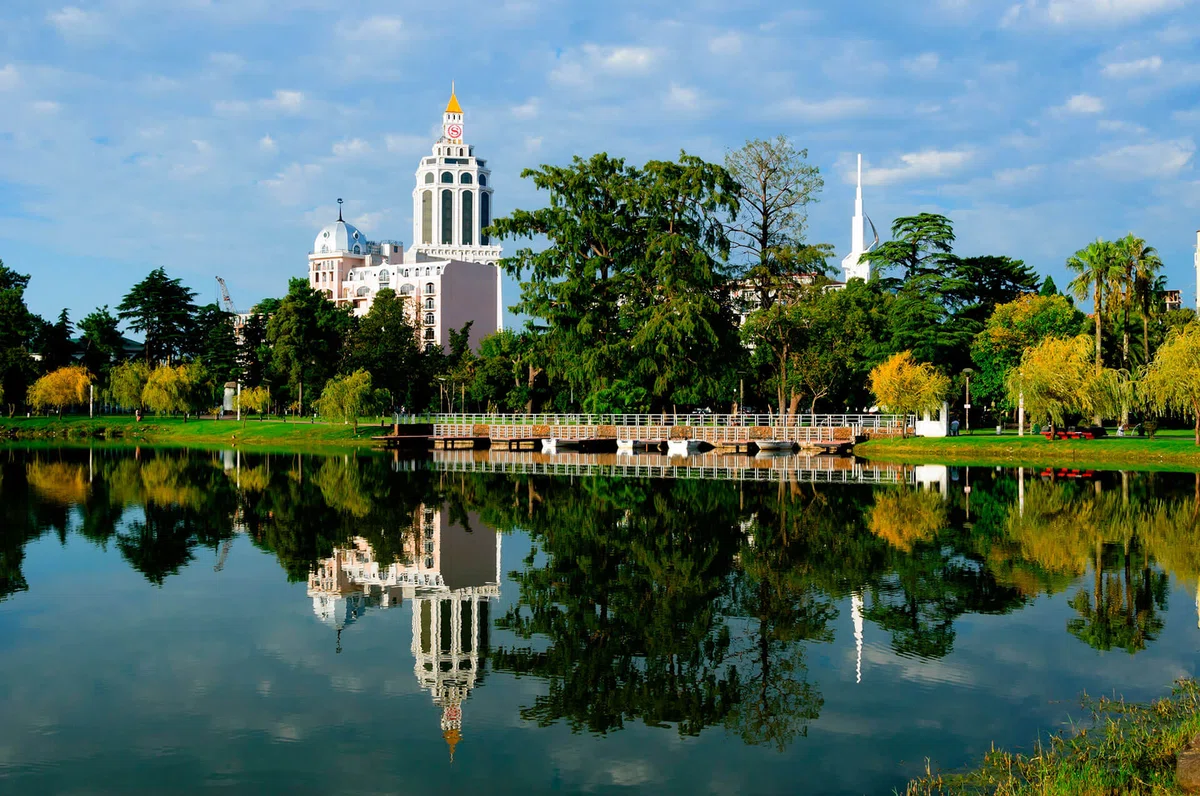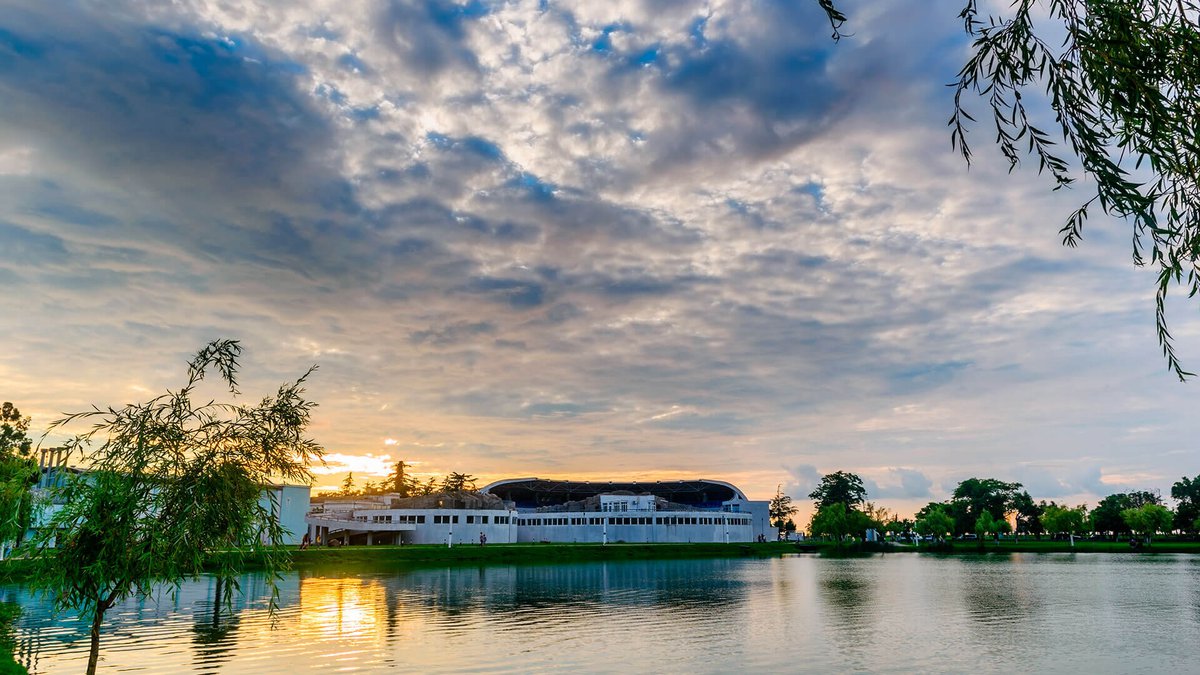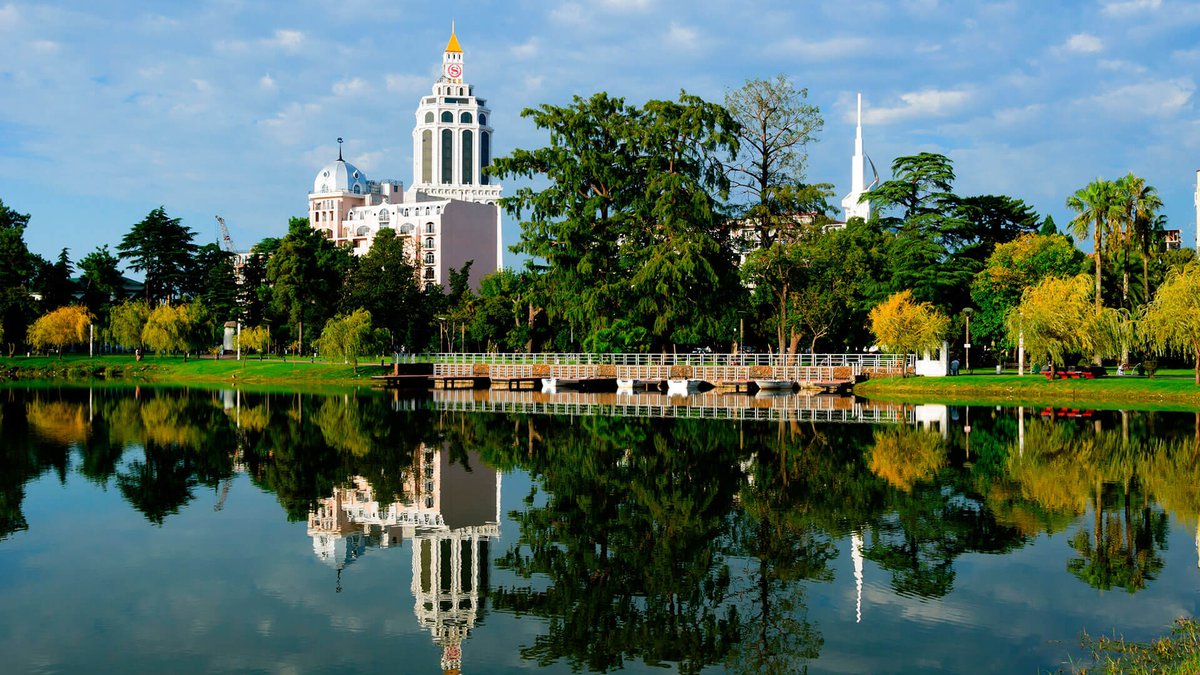
The legendary Nurigel Lake in Adjara is the most beautiful place in Georgia.
Lake Nurigel has its own history. Once it was called Gel-Bash. Once a child drowned in the lake, whose mother could not accept the loss. The girl's name was Nuri. Nowadays Nuri-Gel is a body of water surrounded by picturesque nature.
Visit the legendary Nurigel Lake⬇️
In the western edge of Georgia – Adjara, there is an amazing lake Nuri, which is also called Pioneer or Nuri-Gel. And the lake is amazing because there are many legends about it.
By itself, the reservoir of natural origin, due to its position above sea level, is mainly fed from groundwater.
The history of Lake Nuri in a sense reflects the development of the whole country. Initially, the reservoir was an impassable and harsh swampy area. Then the landscaping of the entire territory began cities of Batumi, including lakes, the shores of the reservoir and the surrounding area were cleared, which became a park from an impassable forest area. In 1947, the first ship called "Pioneer" was launched on the water surface of the lake, hence, by the way, one of the names of the reservoir itself came from. The connection of the lake with the Black Sea through the canal opened up new opportunities for water movement.
Nurigel is rich not only in its species, the beauty of which is difficult to dispute, in the waters of the reservoir there is a large number of fish, mostly freshwater: carp, mullet, carp, dace and many other species.
You can admire the picturesque landscape of the Georgian unique nature not only on the shore. In the central park of Batumi, you can rent a boat and go on a trip on the lake on it, if you wish, you can even manage a vessel. It will be an unforgettable journey for the whole family, there is definitely something here view in Georgia.
In addition to exciting boating, in the park you can relax in comfortable picnic areas, young children will be entertained by colorful playgrounds and a small zoo, where a wide variety of inhabitants of these places live.
Legendа
Sights of Georgia often entwined with legends, the lake of the central park of Batumi is no exception. Nuri-Gel reservoir used to have another name – Gel-Bash. According to the legend Nuri-Gel he was nicknamed as a result of a sad story. It says that once a child named Nuri drowned in the waters of the lake, the girl's mother could not accept the loss, came to the shores of the reservoir every day and called her daughter. From Georgian Nuri-Gel translates as: "Nuri, I'm waiting."

History
In 1881, Smekalovsky took up the arrangement of the territory that we now know as the Batumi National Park, the Major General entrusted this matter to Ressler, a gardener originally from Prussia.
According to the contract, Ressler had to complete the work within ten years. According to the plan , the entire territory was divided into two parts: a garden with ornamental plants and a park. The growth of plants and care was supervised by Ressler and helped by his countryman Reyer.
The work progressed quickly, within just three years the entire area adjacent to the lake was cleared of weeds and wild plants, a flowering alley was erected there and evergreen trees were planted. It was very convenient, because soon the Emperor Alexander III was going to visit the city. Unfortunately, in 1884 the Prussian gardener died, but his business lived on. The French landscape designer continued to equip the space of the park. In 1888 Alexander III visited Batumi, in his honor the park was named "Alexander Garden", at the time of the emperor's arrival the garden stretched over 78,000 m2.
In 1933, the garden regained a new name, this time it was renamed "Children's Park", and after that – "Pioneer Park". The interior of the park was replenished with columns in the Greek style, monuments of figures, one of which is a statue dedicated to the first pilot of Adjara Fadiako Gogitidze. In addition to the decor, the garden was inhabited by new residents. It was decided to build a zoo in the park, at the beginning the aviaries were built of wood, but later they were replaced with comfortable houses for the inhabitants, which were landscaped both for the hot summer season and for the low temperatures of the Caucasian winter. The small zoo is divided into three sections: for marsupials, ungulates and feathered representatives of fauna. Recently, the initiative to create a contact corner for the youngest visitors was considered and approved, so that they could see the animals and learn how to treat them properly and carefully. Safe types of animals have been chosen for the corner: rabbits, guinea pigs and ornamental horses, conditions will be created for a comfortable stay not only for the guests of the corner, but also for its inhabitants.
Since 1936, both entertainment and educational projects for children have been constantly held in the park, a summer theater, a club for young sailors and chess players was opened. In total, 15 clubs of various directions were organized in the park in the 30s, where children could realize any of their aspirations.
In the 40s, attractions were installed in the park, in 1947 the first swings for young visitors were put up. The entertainment industry of the park developed rapidly, during the Soviet era, in the 60s an aquarium was opened where Soviet children could look at representatives of freshwater, marine and ocean inhabitants, the number of which numbered more than 60 different species. Today you can also visit the aquarium, thanks to breeding work, you can observe at least 100 species of fish here. And in 1975, one of the largest dolphinariums at that time was opened. This is where the symbol of Batumi in the form of a dolphin came from. Unfortunately, at the end of the 90s, the dolphinarium closed, like many other institutions, it faced a crisis caused by the difficult political and economic situation in all the countries of the collapsed Union.
20 years later, representatives of the Batumi authorities, together with the Kartu Charitable Foundation, made efforts to restore the dolphinarium, and now it has opened its doors to visitors. In addition to the entertainment program, the Dolphinarium hosts scientific activities of the Black Sea Flora and Fauna Research Center. It contains not only common species of dolphins, but also representatives of the Black Sea bottlenose dolphin – the red book dolphin. They undergo rehabilitation at the dolphinarium and, of course, do not perform, but you can look at them from afar.
In 2007, the park underwent a thorough renovation: new types of trees and plants were planted, the shore along Lake Nuri-Gel was strengthened, lawns were decorated in English style, and the park itself was renamed "Park on May 6", today's total area increased to 165,000 m2.
Throughout its 130-year history, the park has been significantly transformed, undoubtedly, it is one of the most picturesque and interesting places in Adjara, it is not surprising that it is ranked among the most beautiful places of Georgia.













27 comments
Log in to leave a comment